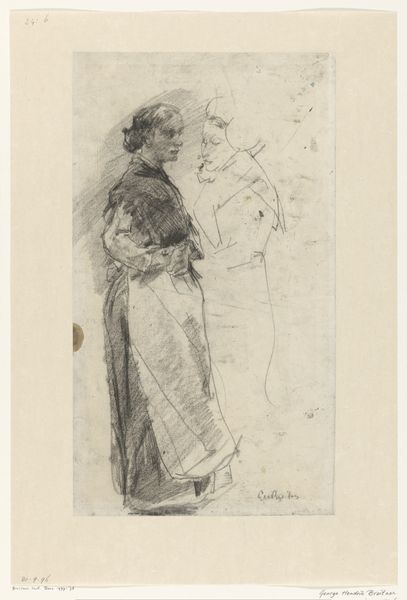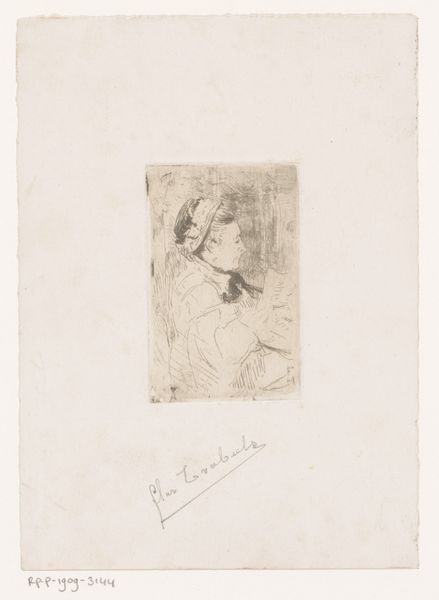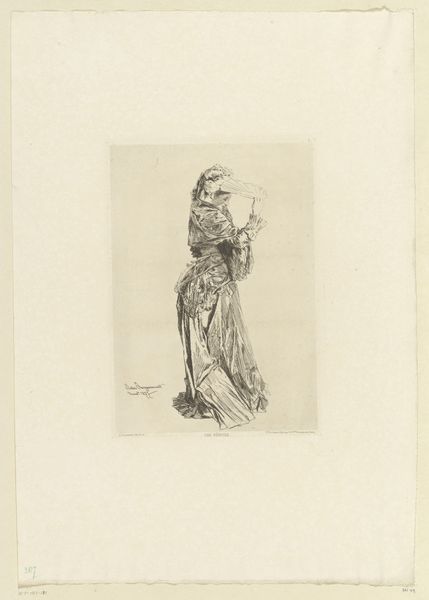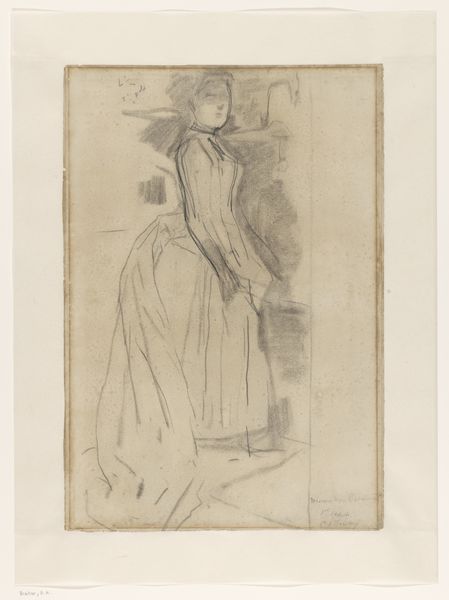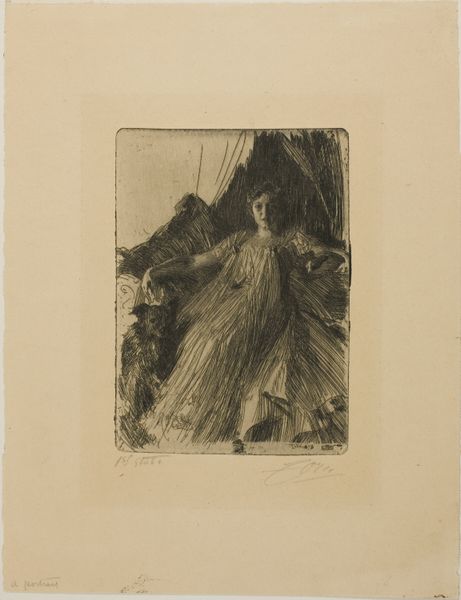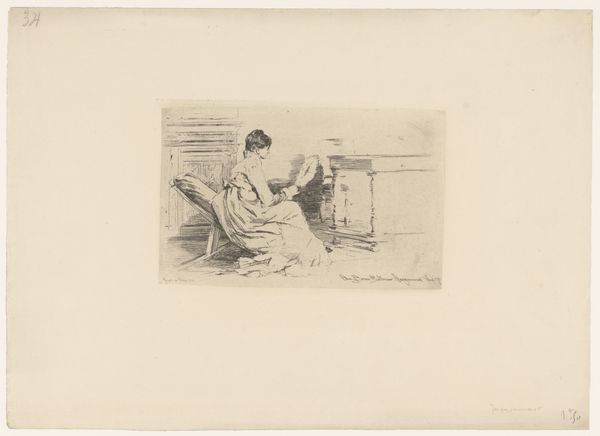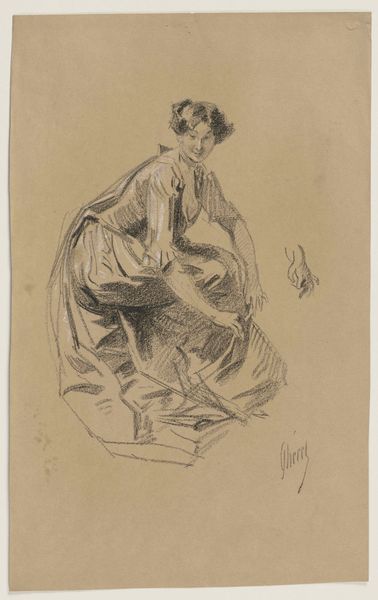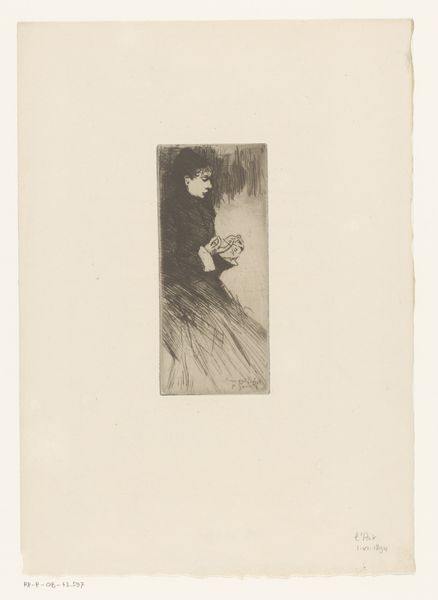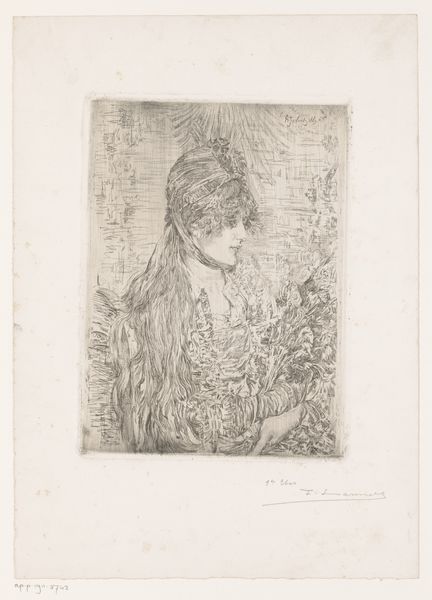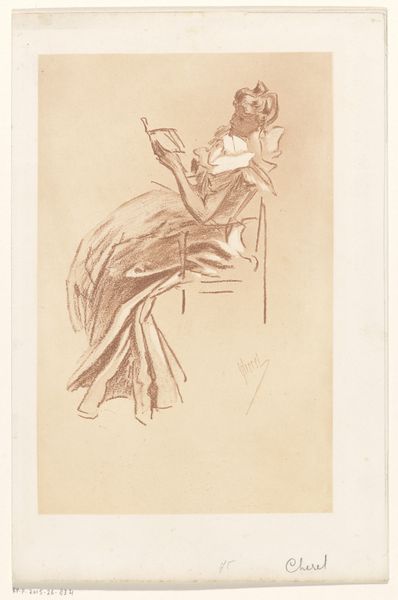
print, etching, paper, ink
#
portrait
#
ink paper printed
# print
#
etching
#
old engraving style
#
figuration
#
paper
#
ink
#
japonisme
Dimensions: height 130 mm, width 55 mm
Copyright: Rijks Museum: Open Domain
Editor: This etching by Peter von Halm, created in 1887, is called "Vrouw in traditionele Japanse kledij met vinger voor de mond" or "Woman in traditional Japanese clothing with finger to her mouth." The figure almost seems to be playfully inviting the viewer into a secret. What do you see here? Curator: The finger to the lips immediately activates the liminal space between seen and unseen, heard and unheard. Consider the woman's kimono; Halm isn't just depicting clothing but invoking the cultural fascination with Japan prevalent at the time, a movement called Japonisme. This aesthetic movement shaped Western perceptions. What secret do you imagine is being conveyed in this moment? Editor: It is interesting you bring up Japonisme because she does look like a westerner in Japanese clothing, appropriating elements of the culture. The ‘secret’ she is alluding to might not even be one, but perhaps an empty orientalist aesthetic? Curator: Indeed! The "secret" is the commodification of an exotic "other" filtered through a European gaze. Her gesture transforms into a symbol of something far more complex. Notice the ephemera, the blossoms at the bottom. The evanescence speaks to the fleeting nature of cultural trends. Editor: That's a powerful observation. I didn't initially connect the impermanence of the blooms with cultural trends, but that really adds another layer to the reading. Curator: Symbols often carry multiple layers, some deliberate, others unconsciously embedded within the cultural memory. I find my readings of artworks shifting over time as new knowledge informs older views. Editor: Thanks. I am leaving with a fresh perspective on how we project cultural narratives into images, especially regarding this Orientalist and Japonisme lens.
Comments
No comments
Be the first to comment and join the conversation on the ultimate creative platform.
